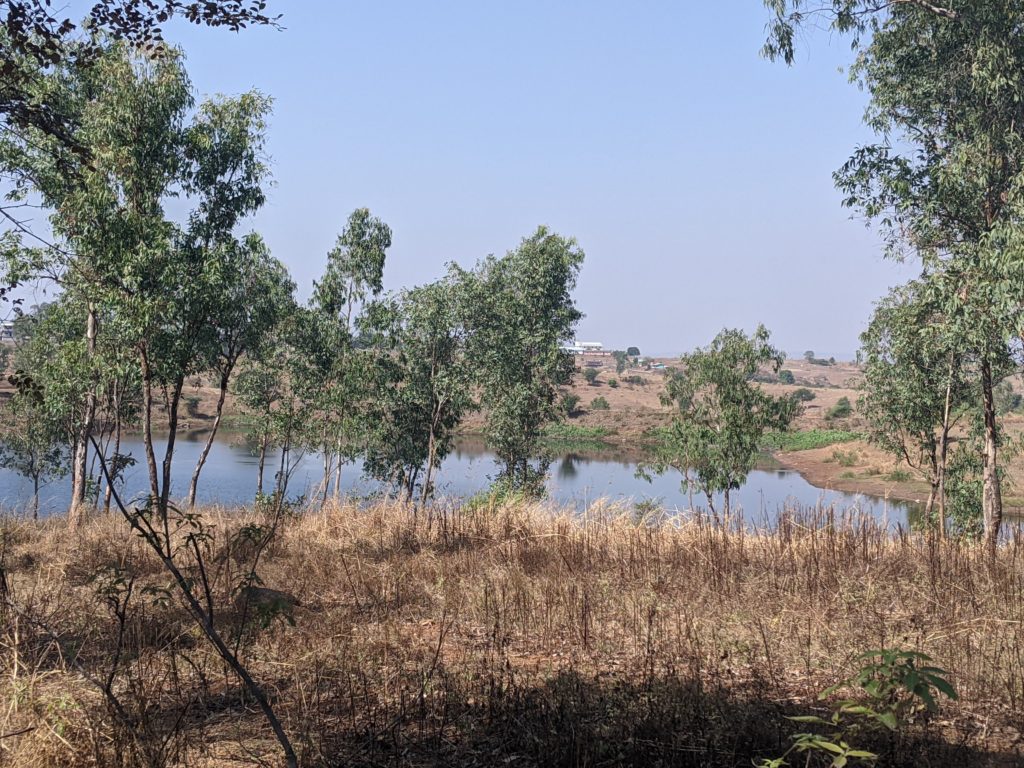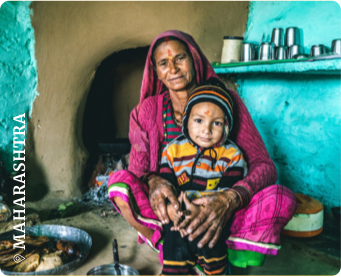Approximately 190 kilometres from India’s financial capital Mumbai, Warghadpada is a predominantly tribal village situated in Mokhada taluka in Maharashtra’s Palghar district. It’s a hilly region, replete with basalt rock and vast stretches of barren land. There is hardly enough water to drink let alone do farming. In addition to the lack of water and livelihood opportunities, it doesn’t have basic amenities such as electricity, education and healthcare.
The transformation is a glowing example of the power of the collective, and has been built on the twin principles of bhoodaan (donation of land) and shramdaan (voluntary contribution involving physical activity). In other words, the big landowners agreed to donate some part of their land for the larger cause of the village while the small peasants toiled away to meet these goals.
This intervention was led by Project Chirag in alliance with their grassroot partner, Diganta Swaraj Foundation.

This intervention was led by Project Chirag in alliance with their grassroot partner, Diganta Swaraj Foundation.
Initially, there was reluctance among the villagers as land is the only asset we have. But when they [the NGOs] explained their plans to us, we could see that it would bring about substantial changes in the area and end our sufferings, says Madhukar Ghane, who donated his land to build a solar grid near the village, which is mostly inhabited by Warli and Mahadeo Koli tribes



“The water filtration plant consists of a pump submerged inside the lake. It pulls the water through suction up to a height of 80 feet and stores it in an overhead tank of 50,000-litre capacity," informs Rahul Tivrekar, the founder and director of Diganta Swaraj Foundation



As a result, the village of over 500 people and 150 cattle at least have access to clean drinking water now. Though the water for irrigation still falls short.



Having said that, the filtration plant has improved the lives of the womenfolk. “Now with at least six taps installed in the village, we don’t have to go to the lake. Our body and feet don’t hurt and, most importantly, it saves us three hours daily,” says a woman on the condition of anonymity. The extra time has allowed a few of them to now work as housemaids in the adjoining areas.
The availability of clean drinking water has led to a drop in the cases of water-borne diseases in the village. “Earlier our stock of 50 tablets (for cough, fever and dysentery) would last for about two months. But our last stock lasted for eight months!” said the resident ASHA (Accredited Social Health Activist) worker.
The tap water facility was followed by the construction of public toilets in the hamlet. This has brought down the instances of open defecation and made the women feel safer.
"Earlier, we had to wait till the dark or venture out very early in the morning to the fields. And it was always embarrassing to take someone along to relieve ourselves. [But] after the construction of toilets, we don't have to worry about our security," says another woman anonymously.
Solar energy ends electricity woes
The water filtration plant would not run if not for a solar grid that Project Chirag has established on the periphery of the lake. This is because the village of Warghadpada doesn’t get a steady supply of electricity.
The electrical energy received from the grid activates the main control board that draws water from the dam and stores it in the overhead tank. Narendra Ghane, a 30-year-old farmer, who is in charge of operating the main control board, says, “The dam caters to Warghad and Gumbadpada villages. I run the motor for two to three hours every day to meet our requirements and fill up the tank.”
Clean energy and lighting have had far-reaching effects. Around 108 households in Warghadpada today have solar home lighting systems comprising of two bulbs, mobile charging facility and a portable lantern installed under Project Chirag. The farmers are able to save close to Rs100 per litre, which they would earlier spend to run the kerosene lamps. The lamps would also give off dangerous fumes, which the villagers don’t have to put up with any more





“Load shedding is common here, and for almost four months during the monsoon, we get no electricity. Now we have a solar panel and lamps to help us out,” Asha Khode, a 20-year-old housewife, shares her happiness.


